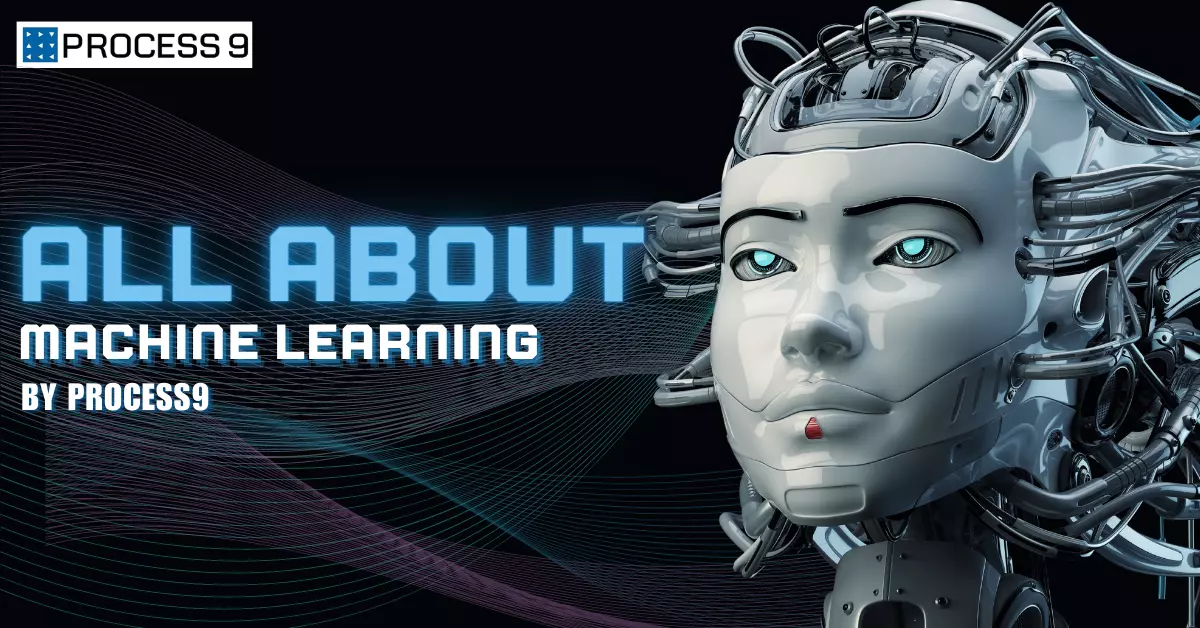In the old days, only humans were able to learn from their experiences, and machines just ran based on instructions. But beginning in the 1950s, researchers realized that even machines could learn on their own using a variety of algorithms and internal data. Today, machine learning is one of the most prominent technologies that have applications across various industries.
What is Machine Learning?
Machine learning is a branch of artificial intelligence that focuses on developing algorithms that allow machines to analyze and interpret data. This technology enables a computer to learn and improve based on its experiences without the need for explicit programming. Machine learning algorithms are created by learning hidden patterns in datasets. With this technology, software applications can combine data with statistical tools to predict outcomes that can lead to actionable outcomes. Machine learning relies on data as the primary source of knowledge. The machine learning models are evaluated for accuracy, precision, and f1 scores based on the tasks.
History of Machine Learning
Machine learning, in its broadest sense, refers to experiential learning. Arthur Samuel, an IBM employee and a pioneer in the fields of computer gaming and artificial intelligence, coined and popularized this term in 1959. Another synonym of machine learning that was used in 1959 was self-teaching computers. According to Arthur Samuel, the study of machine learning is the process that enables computers to learn without having to be explicitly programmed. He developed a checkers-playing computer program that gained popularity and introduced numerous crucial concepts in machine learning. The development of machine learning happened through various stages like connectionism, reinforcement learning, big data, and deep learning.
What are the types of machine learning?
There are three types of machine learning,
- Supervised learning
- Unsupervised learning
- Semi-supervised learning
- Reinforcement learning
Supervised learning
Supervised learning is a type of machine learning where training data consists of labeled examples and inputs and outputs are matched based on them. In this subtype, the input data and its corresponding output labels are gathered in a dataset. Once the data is preprocessed through cleansing and formatting, the relevant features from the input data are extracted, and the machine learning model is chosen and trained to discover underlying data patterns. This subtype is used mainly in predicting discrete labels and continuous values.
Unsupervised learning
Unsupervised learning is a type of machine learning in which no output labels are provided and the training data consists of unlabeled examples. There are two types of unsupervised learning: clustering and dimension reduction. Clustering refers to the grouping of similar data points together, and dimensionality reduction implies reducing the number of input features while retaining the most relevant information. Some of the common applications of unsupervised learning include anomaly detection, image text clustering, etc
Semi-supervised learning
The semi-supervised learning approach includes elements of supervised and unsupervised learning, such as labeled and unlabeled data. The labeled data includes input examples and their corresponding output labels. Unlabeled data consists of inputs that do not have associated output labels. The concept behind semi-supervised learning is to build a reliable machine learning system by leveraging both labeled and unlabeled data.
Reinforcement learning
Reinforcement learning is based on how humans learn through trial and error and feedback from their surroundings. In this method, agents are trained to make sequential decisions in an environment to maximize cumulative rewards. The agents can interact with the current environment and take actions based on the current state. Reinforcement learning is applied in various fields such as robotics, autonomous vehicles, game playing, etc.
What is the life cycle of machine learning?
Each stage in the life cycle of machine learning contributes to the development, deployment, and maintenance of the machine learning system. Every stage is important for building robust and reliable machine learning systems. Some of the common stages in the life cycle of machine learning are,
- Problem Definition
- Data Acquisition
- Data Exploration and Preparation
- Model Selection and training
- Model Evaluation
- Model Tuning and Optimization
- Model Deployment
- Monitoring and maintenance
- Model updates and retraining
- Decommissioning
How does machine learning work?
The training data is loaded into a selected machine-learning algorithm. The input data that is being fed determines whether the algorithm works correctly. Machine learning systems predict the best possible outcome given the amount of data available. The output data is compared with the predicted data and if the results don’t match, the algorithm is retrained multiple times unless a desired output is produced, Through this process, the machine learning algorithm learns on its own, and the accuracy of the output increases over time.
What are the applications of machine learning?
Some of the applications of machine learning include
- Image recognition
- Automatic language translation
- Medical diagnosis
- Traffic prediction
- Speech recognition
- Product recommendation
- Online Fraud Detection
- Stock trading
- Self-driving cars
- Email spam and malware Filtering
- Virtual personal assistant
What is the future of machine learning?
According to Fortune Business Insights, the global market for machine learning is expected to reach $209.91 billion by 2029, growing at a CAGR of 38.8%. Machine learning assists businesses in making informed decisions, developers in solving problems in novel ways, and researchers in providing accurate insights. In the survey conducted by PwC in 2021, 86% of respondents stated that Machine Learning and Artificial Intelligence are now mainstream parts of their company. As a result of the COVID-19 pandemic’s effects on businesses all over the world, more than 50% of them reported accelerating their plans to adopt this technology.







Share: